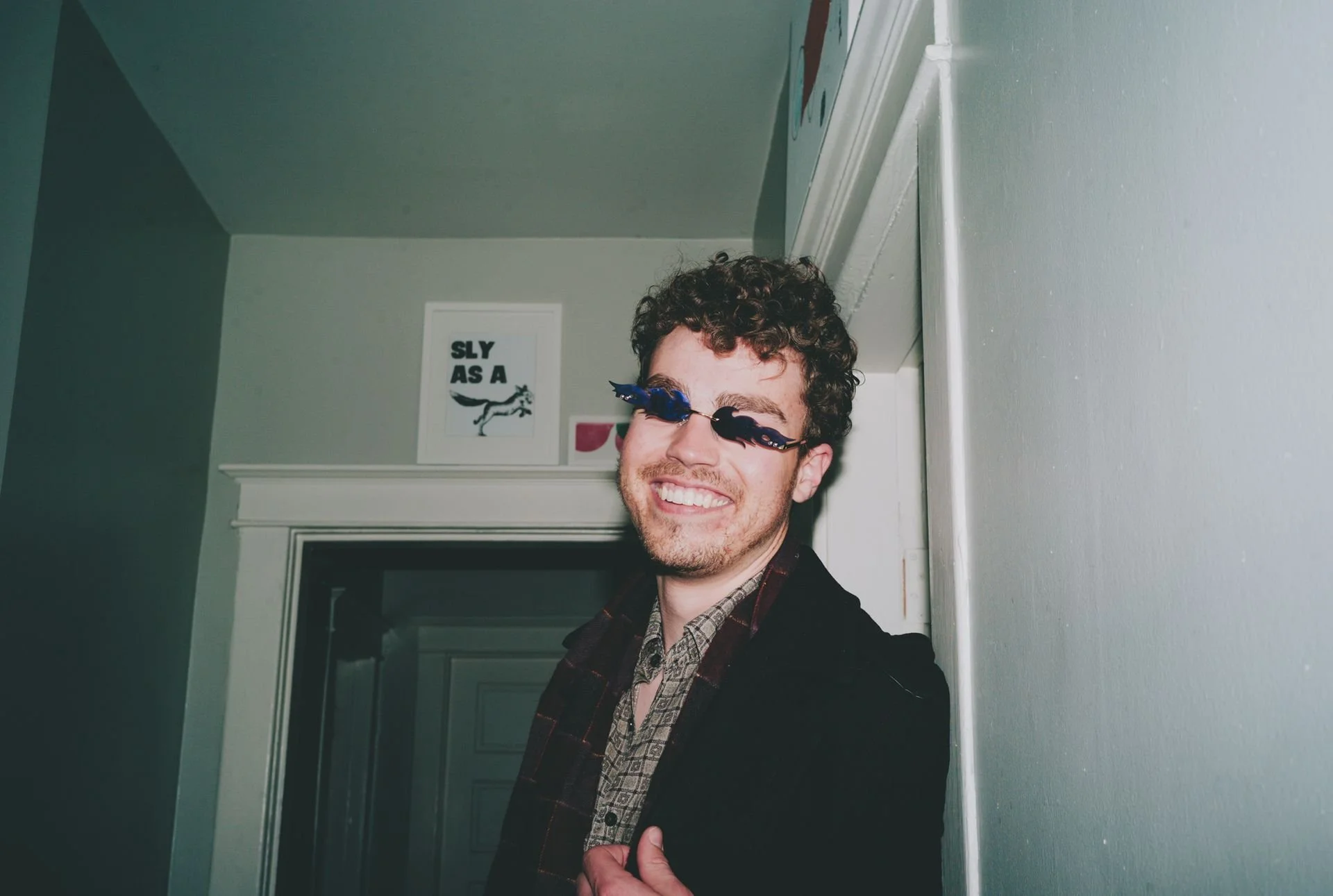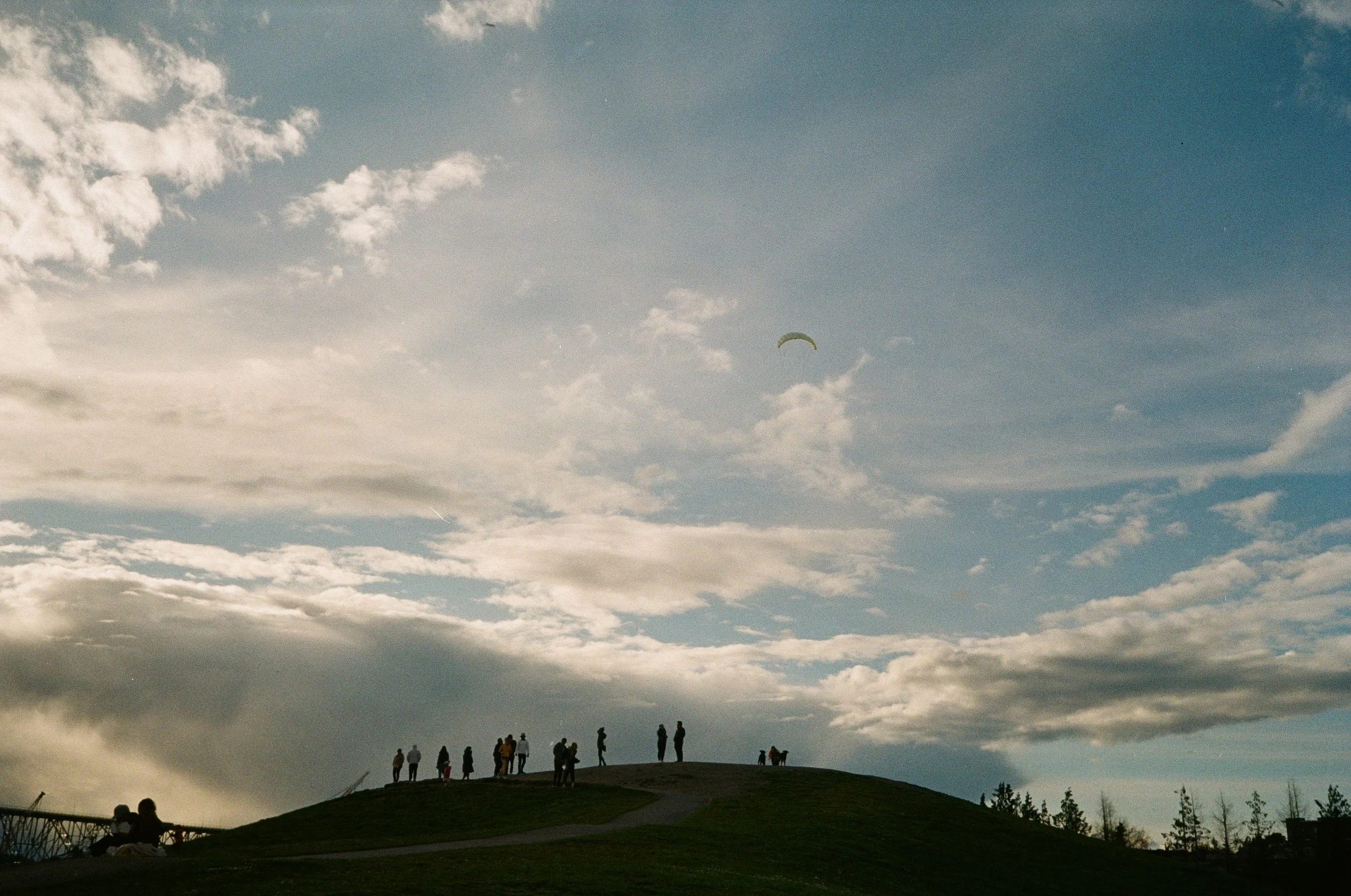How I Stopped Being Terrified of My Own Social Media
A fun photo of me I got too nervous to put on Instagram. Photo by Henri Hardman.
I've spent a lot of time thinking about social media, and for the last few years I had few good things to say about it. I couldn't find a way to engage that felt even close to genuine, and my happiest outcomes came from completely disconnecting, deleting the apps, and just living my life less publicly. Every once in a while I'd sneak back in, post a photo of myself or a video of a concert, and ultimately regret wasting anyone's time who had to spend the third of a second scrolling past it.
But I didn't want to leave. I like seeing other people's sunsets. When someone posts a concert video, I'll put on headphones and watch it to see what it was like being there. All over these apps are dispatches of people all around my city and the world living and sharing their experiences, and I really enjoy watching. It was just that when I participated, it never felt right.
A kite flies over Gas Works Park in Seattle (Olympus A-F1, Fujifilm 200)
The question I wasn't able to answer about my online presence was "Who is this for?". Why do I want these people to know I did this thing? What does this accomplish that I couldn't do with a text to my extended-family group chat? Do I want someone I haven't talked to in 9 years who's married and moved to another state to know what I did today? The answers were: I don't, nothing, and probably not.
I had a professor in college who returned our graded essays, walked up to the chalkboard, and wrote in huge letters: "SO WHAT?" She threw the piece of chalk down and said, "Ask yourself that every time you turn in a piece or writing." It's a lesson I never forgot.
"Show Your Work" by Austin Kleon
Realizing I didn't need to keep an updated feed of my life online allowed for an opening. The lesson started over two years ago, when I watched a video by Ali Abdaal on Show Your Work by Austin Kleon. I bought a copy and read part of it, and it's been sitting on my nightstand since. I picked it up again by chance a few months ago, and it was exactly the message I needed to hear: carve out a space on the internet to "Show Your Work", and as you learn and fail and improve at and share your creative passions, your life will improve. You'll meet people who care about what you have to say, you'll tell better stories, and you'll be more helpful to beginners becase you are also a beginner.
The act of sharing is one of generosity–you're putting something out there because you think it might be helpful or entertaining to someone on the other side of the screen.
"Show Your Work" by Austin Kleon
The book changed how I viewed contributing to social media. Before, my profile was me, and if someone didn't like my profile or what I posted, it meant they didn't like me. But now that my profile was my work, if someone didn't like it, it's just not their style! – this is totally fine and expected in any artistic field. I had disconnected my identity from my social media profile, and viewed it instead as a portfolio. What before felt like a burden now felt like an opportunity. And while my anxiety around contributing didn't disappear, it got much more manageable.
Henri Hardman sits for a portrait as we play with brand new lighting gear (Fujifilm X-T2, 16-55mm f/2.8)
This less shameful way to share coincided perfectly with a general urge to catch up on all the creativity I've been missing out on over the past few years. I got some studio lighting gear and setup a seamless backdrop in my bedroom and started taking portraits of my friends and shared them. I put up some of my favorite unseen photos from the last few years. I finally posted the wedding I had shot that summer.
Once I was sharing my work, I finally started having positive experiences come from social media. Friends and acquaintances liked the style of my initial portraits and started coming over for cheap headshots.
Alex Campbell sits for a portrait in my homemade studio (Fujifilm X-T2, 16-55mm f/2.8)
Someone I hadn't spoken to in at least 6 years reached out and connected me with her friend who was proposing soon and needed a last-minute photographer. The couple loved the surprise photos I had taken while hiding in my car and advertised my work to their own friends.
A fall proposal in Redmond (Fujifilm X-T2, 55-140mm f/2.8)
My portrait work of my partner's dance friends was also getting passed around their community, and my name and reputation began to slowly build as a solid contact for any who needed portfolio shots. Each person I photographed brought a new human into my life and new opportunties for others to find and care about my work.
Mary sits for a portrait (Fujifilm X-T2, 16-55mm f/2.8)
I have no idea where it ends, but I know that showing my work has improved my life and creativity. As I find and develop my photographic style, I hope to continue finding new people who engage with it and want to be a part of it, and for once, I think the internet can actually help with that.
Matt Repplier is a 25 year old software engineer who loves photography, reflection and friends. This blog serves as his creative outlet and space to consider his experiences.





